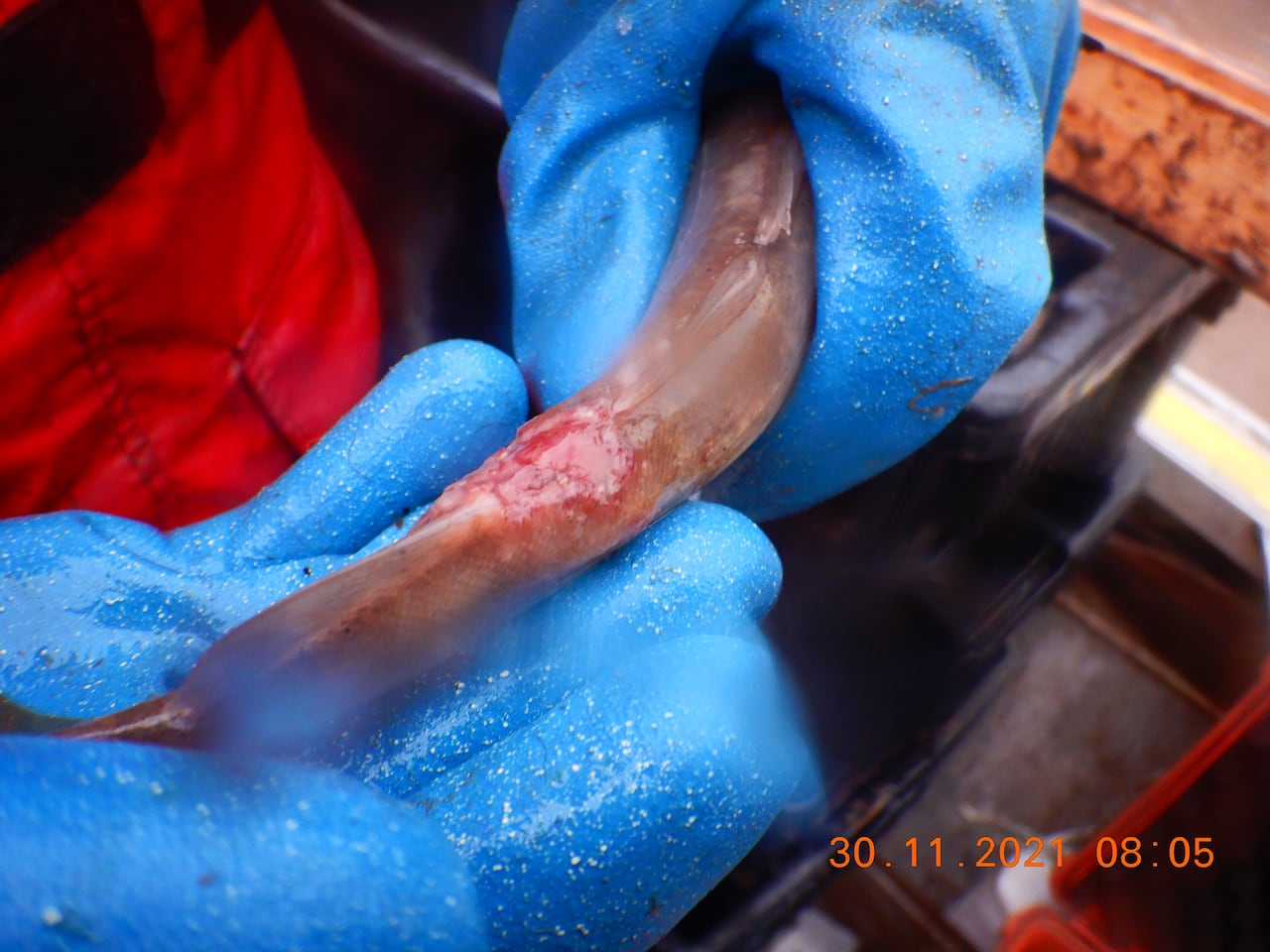A Nova Scotian who fishes in the Minas Basin says he regularly sees the damage faulty culverts cause to fish.
In some cases, says Darren Porter, the results are deadly.
Porter, A. commercial fisherman and environmentalist, points out a pair of culverts on the Halfway River near Hantsport, North Carolina, where strong currents at high tide push fish through them with such force that they can maim or even kill them.
“Just imagine the fish being pulled or pushed through that,” he said. “This is inhumane.”
Porter documented the fish's injuries in photographs that showed deep wounds, bleeding, and even the loss of internal organs due to injury.
Faulty Culverts are not a rare problem. Thomas Sweeney, a biologist with the Nova Scotia Salmon Association, says 50 to 60 per cent of Nova Scotia's 31,000 water crossings where roads cross streams or rivers create problems for fish passage.
A Canada's Fisheries and Oceans Report 2023 found similar results: 45 to 57 percent of culverts in Nova Scotia's four major watersheds—Annapolis, Shubenacadie, St. Mary's and LaHave—were classified as fish impediments.
“In many ways, this is death by a thousand cuts. [the fish] are facing barriers, their populations are threatened throughout much of their range,” Sweeney said, adding that migratory species such as salmon are being hit hardest.
Problems may include damaged culverts, clogged with debris or poorly designed, either not allowing enough water to flow through, or too much water flowing at high speeds.
Porter wants DFO to hold culvert owners accountable by more aggressively enforcing the Fisheries Act, particularly Section 35 which prohibits harming or destroying fish habitat. Violation of this section can result in large fines and even imprisonment.
“Once you start enforcing the law, people will start complying with it,” he said. “Once people comply, we solve the problem. It's pretty simple. Until that happens, we're dead in the water.”
Culvert owners can be government agencies, municipalities, businesses, or private landowners.
Nova Scotia's Department of Public Works, which owns many of the province's culverts, confirmed it does not track how many of them negatively impact fish passage.
“When Public Works receives an order from DFO, we make changes as necessary. We do not track the number or type of orders we receive,” a department spokesperson said in an email, declining to comment further.

A DFO spokesperson said that when the department becomes aware of an obstructed passage, it can order the culvert owner to take corrective action within a certain period of time.
“While voluntary compliance is both the preferred and expected approach, enforcement actions and charges may be brought when circumstances warrant—especially if the initiator fails to meet the necessary requirements to achieve compliance,” the spokesperson said in an email.
When asked by CBC News how many documented Fisheries Act violations over the past 10 years involved culverts, DFO responded that “current data systems are unable to isolate or identify which specific incidents involve dams or culverts.”
CBC News asked DFO for an interview, but the department was unable to grant one.
Calls for better tracking
Sweeney said better tracking could at least make the problem more manageable and allow agencies to prioritize which culverts need to be fixed when budgets are tight.
He said people can play their part through streaming programs who can teach them how to evaluate culverts and record them in database.
“If we take this huge, insurmountable problem and start dismantling it watershed by watershed, even tributary by tributary, that’s how we’ll make progress.”
MORE TOP NEWS








